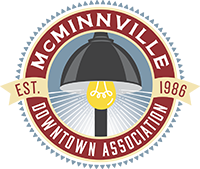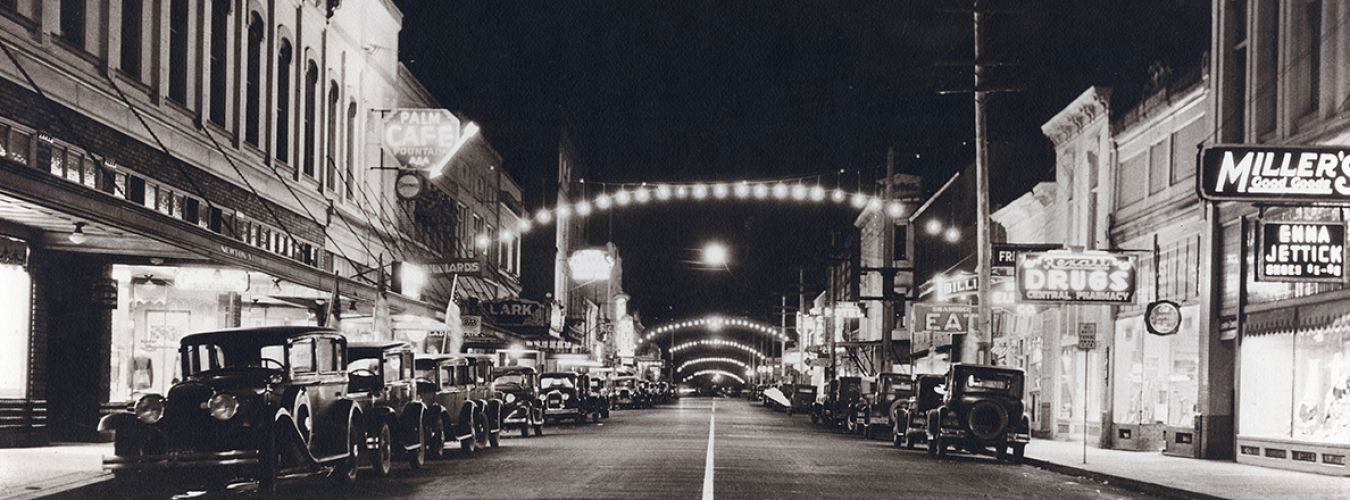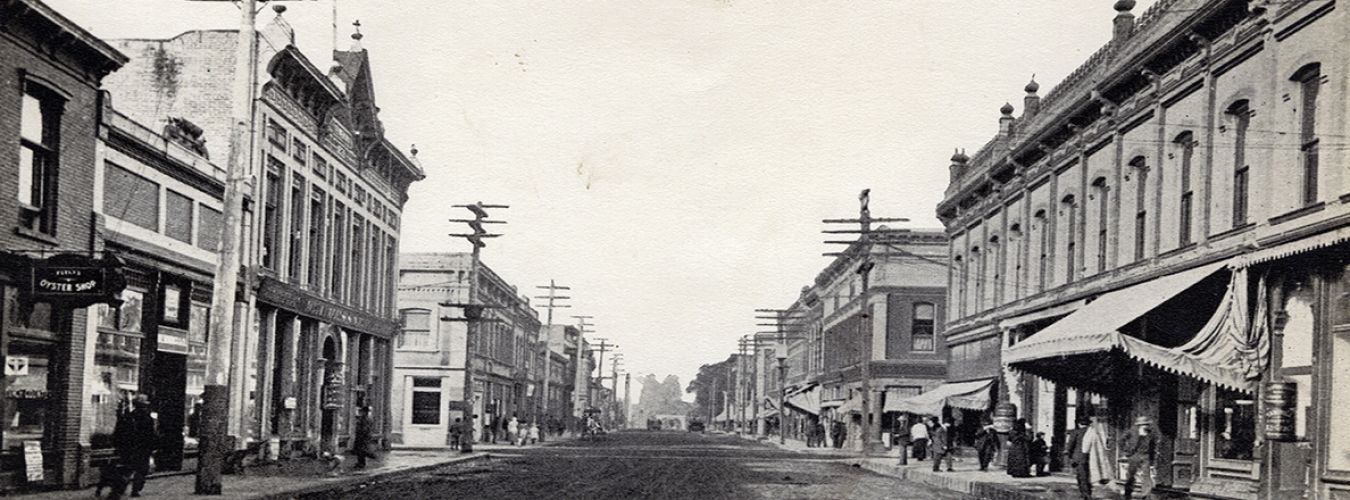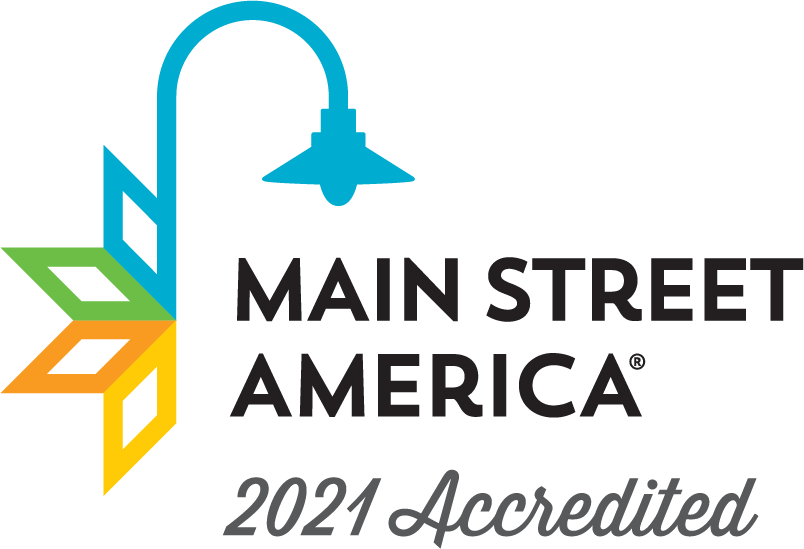The New Oregon Territory
On an early spring day in 1844, a solitary man astride a horse traveled across a well-worn Indian trail in search of an ideal spot to settle in the new Oregon country. After crossing a stream that would later bear his name and traveling some distance through dense timber, 26-year old John Gordon Baker emerged into a clearing of rolling meadows where lush, waist-high grass waved gently in the Oregon breeze. Little did he know that these meadows would soon form the foundation for the thriving community of McMinnville.
Closely following in Baker’s footsteps was William T. Newby, who had been a traveling companion of Baker’s during the Great Migration of 1843. Newby took up a claim immediately to the south of Baker’s, and this is where the city proceeded to grow. Samuel Cozine, another immigrant in the 1843 wagon train, settled to the south of Newby. Soon other members of the 1843 Great Migration and subsequent wagon trains came rolling to a stop around their friends and acquaintances. *
Between the years 1885 and 1912, most of the historic business structures were built. They were constructed primarily of brick and were the successors of the town’s earlier wooden business structures. Building activity peaked in 1928, with McMinnville’s commercial center extending from City Park on the west to the railroad tracks on the east. Through the years, McMinnville has continued to expand while remaining sensitive to its history and the buildings associated with its past. Many of the buildings from that era are still intact today.
*Dorothy Gunness 1976
Our Historic Buildings
Between the years 1885 and 1912, most of the historic McMinnville business structures were built. They were constructed primarily of brick and were the successors of the town’s earlier wooden business structures. Building activity peaked in 1928, with McMinnville’s commercial center extending from City Park on the west to the railroad tracks on the east. Through the years, McMinnville has continued to expand while remaining sensitive to its history and the buildings associated with its past. Many of the buildings from that era are still intact today.
In 1987, the McMinnville Historic District, which includes historically significant buildings built between 1884 and 1937, was entered into the National Register of Historic Places. The District consists of a nine-block area and is comprised of 64 historic properties in 14 easy-to-walk blocks.
A Self-Guided Walking Tour
In February of 2015, the McMinnville Downtown Association received funding to develop a comprehensive inventory on the buildings and businesses within the MDA’s historic district. For this project, private, county and state archives, personal interviews, historic newspapers, local high school and college yearbooks, city directories and maps were compiled.
For additional information, please visit HistoricMac.org. There you can find more detailed information on each property as well as properties not included in this brochure, people and families who impacted the town’s history, oral history interviews with community members, various maps, photographs, diary entries, transcribed letters, and other primary sources.
Other Properties of Interest
- 225 NE Third
- 218-236 NE Third
- 310-320 NE Third
- Knight of Pythias Building 332-334 NE Third
- 335 Evans
- Old US Post Office 414 NE Evans
- Old News-Register Building 401 NE Evans
- 424 NE Third
- 342 NE Third
- Lark Theater – 433 NE Third
- 540-546 NE Third
- Bennette Building – 619 NE Third
- Elks Building – 333 NE Evans
History
1843
Beginning on May 22,1843, more than 1,000 pioneers headed westward on the Oregon Trail.
1844
In the spring of 1844, the first settlers arrive in what is present day McMinnville.
1855
McMinnville is officially named after William T. Newby’s hometown in Tennessee.
1856
The first home is built within city limits.
1858
McMinnville College is born. Its name will be changed to Linfield College in 1922 after Frances Linfield’s husband, Rev. George
Fisher Linfield.
1859
Oregon becomes the 33rd state.
1882
McMinnville is incorporated as an official city with a mayor and city council.
1888
Water, electricity and fire protection are accessible to every establishment.
1894
Sidewalks are constructed using wooden planks and stone. The downtown business center is comprised
of three blocks.
1899
The first long distance phone call was made between McMinnville and Newberg.
1902
John Wortman is the first man in town to own an automobile.
1910
McMinnville Parks & Recreation Department sets up a bandstand and small zoo with bears, deer and local animals
near the present day McMinnville Public Library.
1912
Third Street is paved and a grant from the Carnegie Corporation is awarded to construct the McMinnville Public Library.
1920
McMinnville’s population exceeds more than 2,700 people.
1928
Numbered streets are reversed with a city ordinance to change names.
1938
Highway 99W bypass is built.
1952
Adams and Baker Streets become oneway.
1970
McMinnville’s population exceeds 10,000.
1986
The McMinnville Downtown Association is formed. The vacancy rate downtown is 17%. The MDA works to promote and enhance historic downtown as the economic, social and cultural heart of the community. This project was made possible by the MDA.
2001
The McMinnville Farmer’s Market is founded to support our local economy.
2013
McMinnville’s population reaches 33,131.
2015
The current vacancy rate in downtown is approximately 3%, well below the national average of 11 %.






